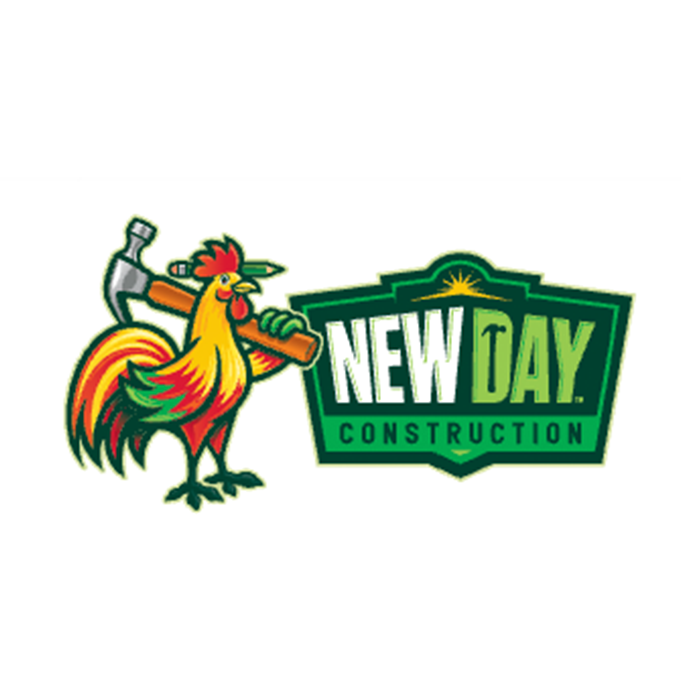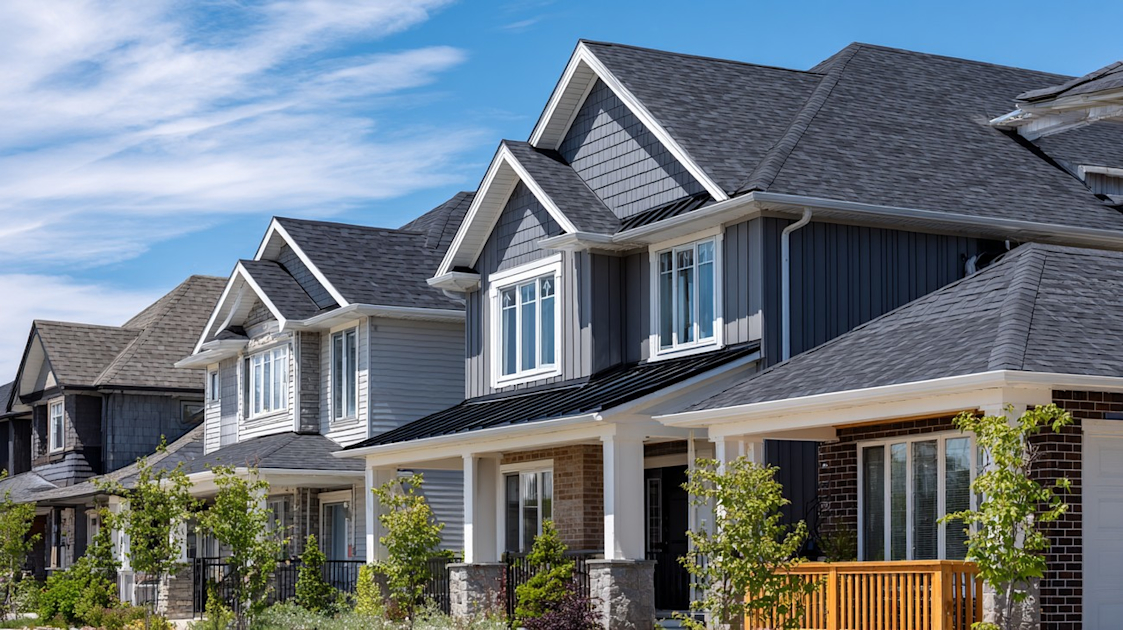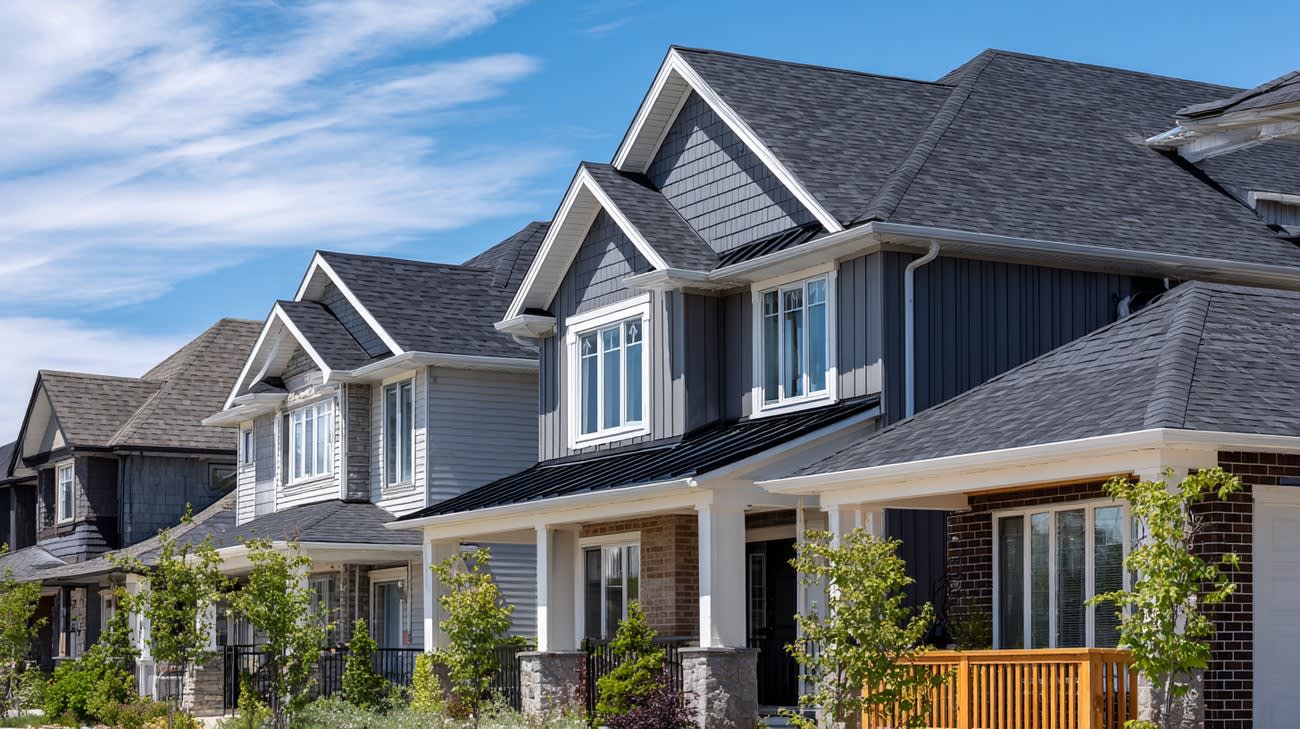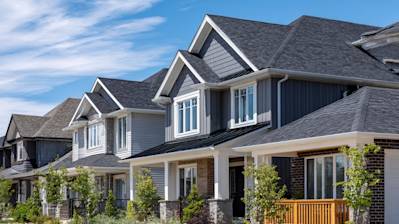When it comes to deciding on the best roof style for your home, the choice often narrows down to the gable roof vs hip roof debate. Each has its own unique features and benefits, but your choice depends on various factors, including climate, design preference, and budget considerations.
What is a Gable Roof?
A gable roof, also known as a pitched or peaked roof, is one of the most common roof styles in residential architecture. Its most distinguishing characteristic is its triangular shape, created by two sloping sides that meet at the top ridge.
Advantages of Gable Roofs
-
Cost-Effective Construction: Gable roofs are often less expensive than other roof types because they are relatively simple to design and construct. Their straightforward design demands less material and less labor time.
-
Excellent Ventilation: The high ceilings and open space of gable roofs provide ample room for ventilation, which is crucial in maintaining a comfortable interior environment and efficient attic ventilation.
-
Effective Water Shedding: The steep slope of a gable roof allows rain, snow, and debris to easily slide off, reducing the risk of roof damage from water pooling.
-
Versatility in Design: Gable roofs are highly versatile and can suit various architectural styles, from traditional homes to more modern designs. They also offer the flexibility to incorporate windows or dormers.
Disadvantages of Gable Roofs
-
Wind Vulnerability: While gable roofs are excellent for rain and snow, strong winds can pose a threat. High winds can catch the overhangs, potentially lifting off the entire roof.
-
Need for Additional Bracing: In windy areas, additional bracing and stronger ties may be required to ensure the roof remains secure.
-
Limited Eaves: Depending on your design, a gable roof might have limited eave space, potentially affecting the overhangs on the sides of your house.
Exploring the Hip Roof
A hip roof, another popular style, features slopes on all four sides. These sides of the hip roof meet at the top, creating a shape that resembles a pyramid or a trapezoid, depending on the house structure.
Advantages of Hip Roofs
-
Stability and Durability: Due to their aerodynamic design, hip roofs are considered more stable and durable, especially in high wind and hurricane-prone areas. The slope on all sides helps to reduce wind pressure on the roof.
-
Eaves on All Sides: Hip roofs offer an overhang on every side, which can help shade the walls and protect them more effectively from rain.
-
Aesthetic Appeal: Hip roofs are often seen as more aesthetically pleasing, offering a more balanced and uniform appearance that complements many modern home designs.
Disadvantages of Hip Roofs
-
Higher Cost: The complexity of a hip roof’s design requires more materials and labor, making it more expensive to build compared to a simple gable roof.
-
Complex Ventilation: The design of a hip roof can make proper ventilation a bit more complicated, requiring additional measures during the design phase to ensure an adequately ventilated attic.
-
Limited Space for Dormers: While hip roofs offer a consistent look, incorporating dormers can be more challenging, limiting design flexibility for attics or additional window space.
Comparing Gable Roof vs Hip Roof: Key Considerations
When choosing between a gable roof and a hip roof, consider these key aspects:
Climate and Area Suitability
-
For Windy Regions: Hip roofs are generally more suitable for areas with high wind activity due to their stable build. Their aerodynamic design aids in reducing wind pressure and potential uplift.
-
Snowy and Rainy Climates: Gable roofs excel in areas that receive a lot of rain or snow, as their steep pitch enables effective shedding of precipitation, preventing damage from leaks or accumulated snow.
Architectural Style and Aesthetics
-
Traditional Homes: Gable roofs are often chosen for their familiar and classical look, fitting well with colonial, ranch, and cottage-style homes.
-
Modern Designs: Hip roofs often pair well with modern architectural styles due to their sleek and balanced appearance. They offer a contemporary feel that complements minimalist and clean lines.
Interior Space and Use
-
Attic Space: The higher pitch of gable roofs typically offers more usable attic space, perfect for storage or creating additional living areas with dormers and windows.
-
Ceiling Styles: With a hip roof, interior ceiling designs might be restricted to accommodate the roof’s slant, which can affect room design choices.
Budget Considerations
-
Initial Costs: A gable roof is generally more budget-friendly in terms of design and construction, ideal for homeowners looking to minimize initial expenses.
-
Long-Term Value: Although hip roofs may require a steeper upfront investment, their features often provide added durability, which can translate to fewer repairs and potentially lower insurance premiums.
Gable Roof vs Hip Roof: Popular Variations and Combinations
Cross Gable Roof
A cross gable roof involves two or more gable roof lines intersecting at a 90-degree angle. It adds character and enhances the aesthetic appeal, especially in larger homes and complex buildings. It provides architectural interest and the opportunity for additional natural light with more window space.
Full or Half Hip Roof
A modified version of the hip roof, the full or half hip roof includes a slight gable section at the top, offering some of the wind-resistant benefits of a hip roof while creating a slightly more traditional aesthetic akin to gable roofs.
Dutch Gable Roof
Combining elements of both the hip and gable roof, a Dutch gable roof includes a miniature gable roof on top of a lower hip roof. This style enhances attic space and allows for more design flexibility with windows or natural lighting.
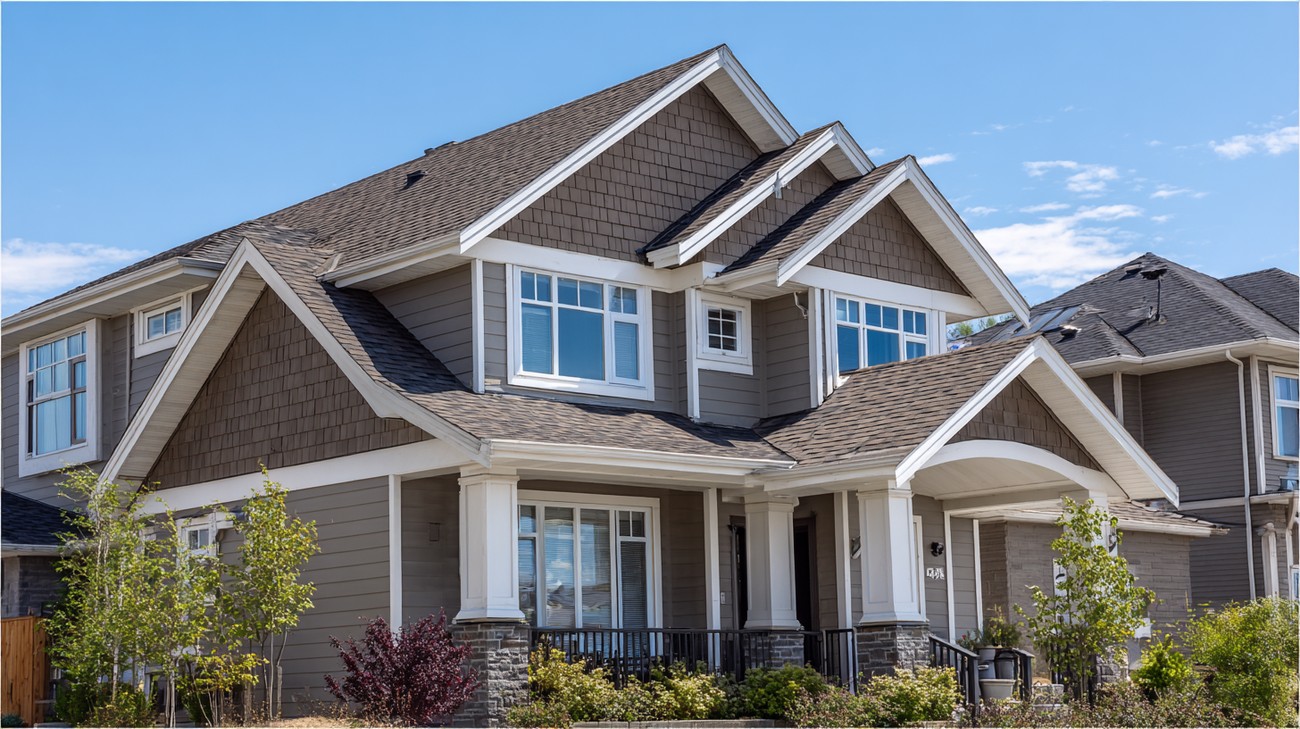
Frequently Asked Questions about Gable Vs Hip Roof
Why might someone choose a gable roof over a hip roof?
Many people opt for gable roofs because they're relatively simple to construct and often more affordable than hip roofs. The triangular shape allows for additional interior space, making it easier to add a loft or attic. If you live in an area with heavy rain or snow, gable roofs shed water and snow quite well, which is another big plus.
In what scenarios is a hip roof a better choice?
Hip roofs are a popular choice for homeowners in regions prone to high winds and hurricanes. Because of their four-sided design, hip roofs are generally more stable and offer better resistance to strong gusts. They're also known for their symmetrical appearance, which can add a touch of elegance to your home's architecture.
How do gable roofs handle weather compared to hip roofs?
Both types of roofs have their own way of dealing with weather conditions. Gable roofs are excellent for rain and snow runoff, thanks to their steep slopes. However, they might be more vulnerable to wind damage due to their open ends. Hip roofs, with their enclosed, sloping design, offer better wind resistance, making them a safer bet in storm-prone areas.
Are there different styles of gable roofs?
Absolutely! Gable roofs come in a variety of styles to suit different architectural needs. Some popular styles include the side gable, front gable, and cross gable. Each has a unique design, but they all share the common characteristic of forming a triangle in profile.
What about variations in hip roof designs?
Yes, there are several hip roof variations as well. Some of the most recognized styles include the simple hip, cross-hipped, and half-hip. These variations can enhance the aesthetic appeal of your home while also maintaining the inherent stability and weather resistance that hip roofs are known for.
How do gable and hip roofs affect energy efficiency?
Energy efficiency can vary significantly between the two roof types. Gable roofs typically allow for better ventilation in the attic space, which can help keep your home cooler in the summer. However, hip roofs have less exposed area, potentially providing better insulation and energy efficiency throughout the year. To maximize energy savings, incorporating proper ventilation and insulation is crucial, regardless of the roof type.
Can I convert a gable roof into a hip roof, or vice versa?
Converting between a gable roof and a hip roof is technically possible, but it's a complex and often costly endeavor. The structural changes required may be significant, depending on the design and layout of your existing home. It's always a good idea to consult with a professional architect or contractor to assess feasibility and budget if you're considering such a transformation.
How do roofing materials differ for gable vs hip roofs?
Both gable and hip roofs can be constructed using a variety of materials like asphalt shingles, metal, tile, or wood. However, each roof type may present unique considerations. For instance, the sharper angles of a gable roof might limit the types of tiles that can be used. Conversely, the numerous slopes of a hip roof can affect material costs and installation.
Which roof type is generally more cost-effective?
The cost-effectiveness of gable vs hip roofs can vary significantly based on the project's scope and the materials chosen. Generally, gable roofs tend to be less expensive due to their simpler design, which requires less labor and material. Hip roofs, while potentially more costly, offer added benefits like increased stability and architectural appeal, which might justify the expense for many homeowners.
What about maintenance for gable and hip roofs?
Maintenance needs can differ based on the roof type. Gable roofs, with their straightforward design, typically mean easier access for cleaning and repairs. On the other hand, hip roofs might require a bit more effort due to their complex structure and additional surface area. Regardless of roof type, regular inspections and upkeep are vital to prolonging the life of any roofing system.
How do I decide between a gable and hip roof for a new construction?
Choosing between a gable and a hip roof for new construction often boils down to factors like climate, budget, and aesthetic preference. If you're in a windy or hurricane-prone area, a hip roof could be the safer option. For those on a tighter budget or needing extra attic space, a gable roof might be the way to go. Ultimately, consulting with a trusted architect or building contractor can provide tailored advice that aligns with your specific needs and local building codes.

Pros
Gable Roof
Cost-Effectiveness
Gable roofs are generally more cost-effective when compared to hip roofs. The design and construction of a gable roof are usually simpler, which can result in lower labor costs. Fewer materials might also be required due to the straightforward design, which typically includes just two sloping sides.
Ease of Construction
Because of their straightforward design, gable roofs are often easier and quicker to construct. This is particularly appealing for builders and homeowners who are looking for a no-nonsense, efficient construction process. The simpler design can also mean fewer complications during the build, reducing the likelihood of delays or unexpected expenses.
Ventilation
The steep, pitched nature of a gable roof allows for excellent ventilation. This can be particularly advantageous in hot climates where air circulation in the attic is necessary to control heat buildup. Adequate ventilation also helps in reducing moisture levels, which can prevent mold and extend the lifespan of roofing materials.
Aesthetic Appeal
The classic triangular shape of a gable roof is often considered visually attractive. This design can suit a variety of home styles, adding a traditional and stylish look to the structure. The versatility in design options, like variations in pitch and the ability to accommodate different types of siding, make gable roofs appealing to many homeowners.
Attic Space
Gable roofs often provide more attic space than hip roofs. This increased space can be utilized for storage or even converted into additional living space. The larger volume of space is especially beneficial in areas with moderate climates where attic insulation is less of a concern.
Hip Roof
Stability and Durability
Hip roofs are known for their high level of stability and durability. The inward slope on all four sides makes them much more resistant to high winds and other harsh weather conditions. This is particularly beneficial in areas prone to hurricanes or strong wind storms.
Aesthetic and Design Versatility
Hip roofs can offer a sleek, contemporary aesthetic to a home. They can blend seamlessly with various architectural styles, from country cottages to modern homes. Also, with the potential to add dormers or gables, a hip roof can be customized to enhance the visual appeal of the property.
Consistent Drip Line
One of the practical advantages of a hip roof is the consistent drip line around the house. This can help in managing water runoff more evenly and reducing the risk of water-related damage to the structure's foundation.
Reduced Risk of Leaks
Since hip roofs have fewer exposed seams and edges compared to gable roofs, they generally present a reduced risk of leaks. This can lead to fewer long-term maintenance issues and enhanced protection of the interior space from water damage.
Cons
Gable Roof
Susceptibility to Wind Damage
While gable roofs are effective at shedding rain and snow, they are not as resistant to high winds. The open ends of the gable structure can create uplift issues during extremely windy conditions, which can lead to structural damage or even roof failure in severe cases.
Limited Design Options
Although aesthetically appealing, the design options for gable roofs are relatively limited compared to hip roofs. The basic triangular form is quite consistent, meaning homeowners seeking distinctive or non-traditional roof styles might find their options are somewhat constrained with a gable roof.
Maintenance Challenges
The steeper the pitch of a gable roof, the more challenging it can be to perform maintenance tasks. Routine inspections, cleaning, or repairs might require professional assistance due to safety concerns, which can incur additional costs over time.
Hip Roof
Increased Construction Costs
The complexity of a hip roof design often leads to higher construction costs. More structural components and roofing materials are typically required to build a hip roof, increasing both material and labor costs. This can be a significant consideration for budget-conscious homeowners.
Limited Ventilation
Due to the less steep slopes and enclosed design, hip roofs generally offer less natural ventilation compared to gable roofs. This can lead to higher attic temperatures in summer and increase the risk of moisture build-up if not managed properly.
Reduced Attic Space
The design of hip roofs typically results in less attic space, limiting storage options. In addition, the reduced height can make converting the attic into a functional living space more challenging.
Can Be More Complex to Design
Building a hip roof can require more complex engineering and architectural planning. The need for additional trusses and support structures to achieve the typical hip design can complicate the planning process and might require the expertise of skilled professionals.

Myths / Misconceptions about Hip Roof
In the world of roofs, there's a surprising amount of misinformation and myths that persist, especially about the hip roof, a design choice that is as functional as it is aesthetically pleasing. Let’s set the record straight about some of the most common myths surrounding hip roofs.
Hip Roofs Are Always More Expensive
The Cost Factor
A prevailing myth about hip roofs is that they are always significantly more expensive than other roof shapes, such as gable roofs. While it’s true that hip roofs often have a higher cost due to the complexity of the design and the need for more materials, the actual cost can vary greatly based on factors like the size of the roof, the types of materials selected, and regional labor costs.
Material and Labor Considerations
In areas where materials like shingles are more affordable, or labor costs are lower, the price difference might not be as drastic. Also, innovations in roofing materials and construction techniques have made it possible to install hip roofs more efficiently, which can help mitigate some of these cost differences.
Hip Roofs Are Valuable Only For Their Aesthetic Appeal
Beyond Good Looks
Hip roofs undoubtedly add a touch of elegance and sophistication to any home due to their symmetrical sloping sides that meet at the top. However, their value extends beyond mere curb appeal. They are celebrated for their structural stability, making them especially advantageous in regions prone to high winds and hurricanes.
Weather Resistance
A common misconception is that aesthetics are the primary reason hip roofs are chosen. In truth, their aerodynamic design plays a key role in their ability to withstand harsh weather conditions. This feature can sometimes translate into lower insurance premiums and better long-term durability.
Hip Roofs Provide Limited Attic Space
Understanding Attic Design
A popular myth is that hip roofs automatically limit the amount of attic space compared to gable roofs. While it’s true that the design of a hip roof can result in less usable space under the roof, this is not always a limitation.
Clever Use of Space
Many modern hip roof designs incorporate dormers or other architectural features that can maximize attic utility. It is also possible to design a hip roof with a steeper pitch, offering more vertical space inside. Therefore, homeowners interested in hip roofs shouldn't automatically rule them out if they desire attic space.
Hip Roofs Don’t Support Solar Panels
Suitability for Solar Installations
Another misconception is that hip roofs are unsuitable for solar panels due to their angled surfaces. However, this is not necessarily true. Thanks to advancements in solar technology, panels can be installed on virtually any roof type, including hip roofs.
Installation Techniques
Skilled solar installers can accurately evaluate the orientation and angles of a hip roof to optimize solar panel placement, ensuring that homeowners can indeed take advantage of solar energy savings.
Only Hip Roofs Can Withstand Severe Weather
Performance of Different Roof Types
It is often said that only hip roofs can handle severe weather conditions such as hurricanes or strong winds, leading some to believe that other roof types are ineffective. While it’s true that hip roofs have an advantage due to their sloped design, there are several other factors at play.
Responsible Roofing Practices
The overall durability of a roof in severe weather also depends heavily on construction quality, roofing materials used, and regular maintenance. Other roof types, like the gable roof, can also be fortified to withstand harsh conditions through modern building techniques and appropriate materials selection.
Hip Roofs Are Only Suitable for Warm Climates
Versatility Across Climates
There’s a notion that hip roofs are only advantageous in warm climates where high winds and hurricanes are a concern. The reality is that hip roofs are suitable for a wide range of climates.
Cold Weather Benefits
In colder climates, a hip roof can help with snow runoff due to its slopes, reducing the weight on the roof and the likelihood of ice dams, which makes it a practical choice for homeowners in snowy regions as well.
Dispelling these myths is important for anyone considering a hip roof for their home, ensuring informed and effective decision-making. Hip roofs offer a range of benefits that can be tailored to fit different needs and preferences beyond the common misconceptions.
Summary
When it comes to comparing gable vs hip roof, both options bring their own set of unique advantages that cater to different needs and preferences. Gable roofs, with their simple design, are perfect for those who want a classic look combined with cost-effectiveness. They offer excellent water drainage and more attic space, making them a practical choice for many homeowners. On the flip side, hip roofs provide a more stable and wind-resistant structure, which is ideal for areas that experience severe weather conditions. This kind of roof also offers a sleeker appearance, which might be preferable if aesthetics play a major role in your decision-making process.
Looking into the gable vs hip roof debate further, the environment and climate you live in could be the determining factor. For instance, if you live in a region prone to heavy snow or rain, the gable roof could easily handle the task with its efficient design. However, if your home is in an area with frequent high winds or hurricanes, a hip roof could offer the resilience you need to safeguard your property. Ultimately, knowing the climate's demands will help you make an informed choice that not only complements your home's architecture but also stands up to Mother Nature.
In weighing up gable vs hip roof options, it's important to consider your budget, personal taste, and future plans. If you're on a tighter budget or plan on extending your home later, a gable roof might be the way to go. It's cost-effective and easier for structural additions. However, if you're looking for a roof that promises durability and matches a custom design or more refined architectural style, a hip roof could be worth the investment. Whichever route you choose, understanding the pros and cons of each will help you make the best decision for a roof that will protect and enhance the beauty of your home for years.
About New Day Construction
Welcome to New Day Construction, your go-to experts for transforming spaces in Kirkland, WA! With a passion for innovative design and a commitment to quality, we've been helping our community reimagine their homes and businesses for over a decade. Our team is made up of skilled craftsmen and creative minds who thrive on delivering personalized solutions tailored to your unique needs. From cozy home renovations to ambitious commercial projects, we promise an attention to detail and dedication to customer satisfaction that's second to none. Let's build something amazing together — because every new project is a new day!
